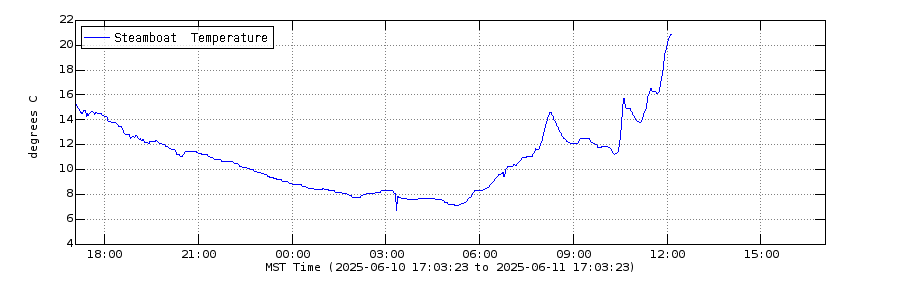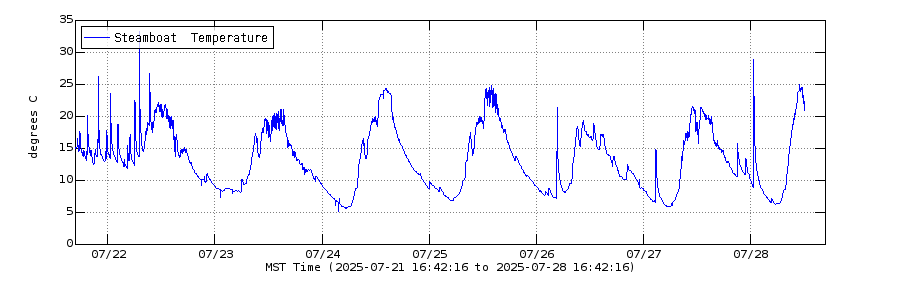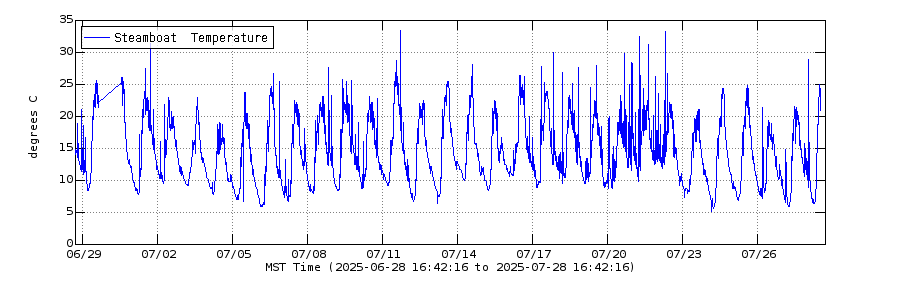Water Temperature Data for Steamboat Geyser, Yellowstone National Park
This geyser is located at the eastern edge of Norris’ Back Basin. It rarely has major eruptions, but when they occur they are powerful. In these events, columns of hot water reach heights up to 100 meters followed by a raucous steam phase that can last for over a day, loudly discharging steam nearly 200 meters into the atmosphere.

This geyser is located at the eastern edge of Norris’ Back Basin. It rarely has major eruptions, but when they occur they are powerful. In these events, columns of hot water reach heights up to 100 meters followed by a raucous steam phase that can last for over a day, loudly discharging steam nearly 200 meters into the atmosphere. The water is neutral-to-alkaline and rich in Cl. Small ("minor") eruptions can occur every few minutes. The temperature is measured in the outlet channel downhill from the geyser’s vent.
Steamboat has proven more active during the early 21st Century than any time since the early 1980s. Between late 1991 and 2000, there were no large eruptions. Several occurred between 2000 and 2014. A phase of frequent eruption began in March of 2018.
Rapid temperature increases in geyser outlet channels typically reflect increases in flow due to eruptions of the nearby thermal feature.
Daily Temperature Graph

Weekly Temperature Graph

Monthly Temperature Graph

Additional Information
This geyser is located at the eastern edge of Norris’ Back Basin. It rarely has major eruptions, but when they occur they are powerful. In these events, columns of hot water reach heights up to 100 meters followed by a raucous steam phase that can last for over a day, loudly discharging steam nearly 200 meters into the atmosphere.

This geyser is located at the eastern edge of Norris’ Back Basin. It rarely has major eruptions, but when they occur they are powerful. In these events, columns of hot water reach heights up to 100 meters followed by a raucous steam phase that can last for over a day, loudly discharging steam nearly 200 meters into the atmosphere. The water is neutral-to-alkaline and rich in Cl. Small ("minor") eruptions can occur every few minutes. The temperature is measured in the outlet channel downhill from the geyser’s vent.
Steamboat has proven more active during the early 21st Century than any time since the early 1980s. Between late 1991 and 2000, there were no large eruptions. Several occurred between 2000 and 2014. A phase of frequent eruption began in March of 2018.
Rapid temperature increases in geyser outlet channels typically reflect increases in flow due to eruptions of the nearby thermal feature.
Daily Temperature Graph

Weekly Temperature Graph

Monthly Temperature Graph


